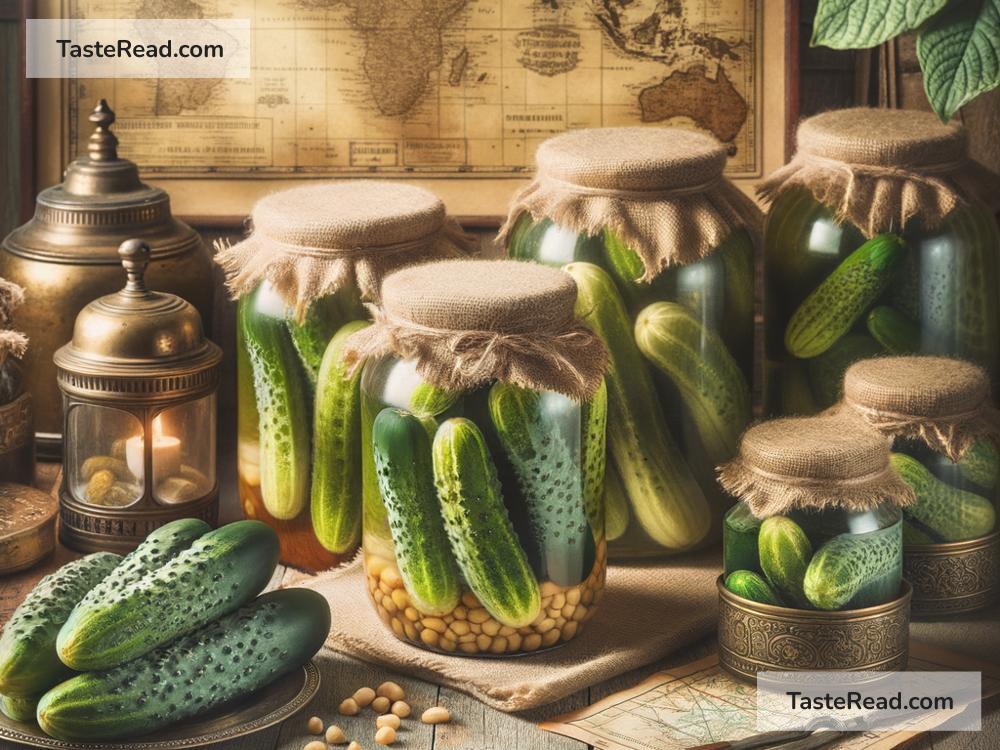The Origin Story of the First Pickle
Pickles are one of the world’s favorite snacks, loved by people of all ages. Whether they’re crunchy cucumber pickles, tangy pickled onions, or spicy pickled peppers, these zesty treats add flavor and excitement to meals everywhere. But have you ever wondered who made the very first pickle? What is the origin story of this delicious food? Let’s dive into history and explore how pickles came to be.
What Is a Pickle?
Before we talk about the origin of pickles, let’s define what a pickle is. A pickle is any fruit or vegetable that has been preserved in a solution, usually made of vinegar, salt, water, and sometimes spices. This process is called “pickling.” Pickling helps keep food fresh for longer, and it also adds a unique taste—often sour, salty, or spicy.
While cucumbers are the most common pickled food today, many different fruits and vegetables can be pickled, like carrots, cabbage, and even mangoes. Pickling has been practiced for thousands of years, but how did it all start? Let’s find out.
The Very First Pickles: A Story from Ancient Times
To find the first pickle, we need to go back in time—very far back. Historians believe the origin of pickling goes all the way to ancient Mesopotamia, around 2400 BCE. Mesopotamia is known as one of the world’s earliest civilizations, and it was located in the region we now call the Middle East. This area’s climate was very hot, and food could spoil quickly. The people who lived there needed a way to make their food last longer. They discovered that soaking fruits and vegetables in brine (a salty water mixture) could preserve them. This may have been the beginning of pickling.
Why Pickling Was Important
In ancient times, people didn’t have refrigerators or freezers to keep their food fresh. Pickling was a creative solution to this problem. Preserved food was important for survival, especially during long journeys and in seasons when fresh food didn’t grow. Pickling allowed people to enjoy fruits and vegetables even in harsh weather conditions.
Not only was pickling practical, but it also added variety and flavor to diets. Imagine biting into a crunchy pickled cucumber after eating plain bread for days—it would have been a real treat!
Pickles Spread Around the World
The first pickles were likely made with cucumbers, one of the oldest cultivated crops in history. Cucumbers originated in India, an area with a long history of growing the vegetable. Traders brought cucumbers to Mesopotamia, where they were pickled for preservation and flavor.
As different cultures learned about pickling, they started to experiment with their own techniques, ingredients, and spices. The practice spread quickly across the world. Egyptians, Greeks, and Romans all embraced pickling. In fact, Cleopatra, the famous Egyptian queen, was said to eat pickles regularly because she believed they helped her stay healthy and beautiful.
Pickles weren’t just popular among royalty—they also became essential for soldiers and sailors. Roman soldiers carried pickled foods during battles, and sailors used pickles to prevent scurvy, a disease caused by a lack of vitamin C. Pickling helped people survive challenging situations, making it an invaluable skill.
Pickles in History and Culture
As the centuries passed, pickles became an important part of many cultures. In Europe, pickles were a staple at dinners during the Middle Ages. In China, pickled vegetables like cabbage and radish were enjoyed as side dishes. In Korea, pickled foods eventually led to the creation of kimchi, a famous fermented dish.
Pickles also traveled across oceans. When Europeans began exploring the Americas, they brought pickling recipes with them. Settlers preserved fruits like apples and peaches using vinegar. This helped them survive harsh winters when fresh produce was scarce.
As pickling grew around the world, so did the variety of pickled foods. Today, you’ll find pickled everything—cucumbers, carrots, eggs, fish, and more.
Pickles Today
Fast forward to today, and pickles are everywhere. They appear on burgers, sandwiches, charcuterie boards, and even pizza! You can find pickles in nearly every country, from tangy dill pickles in the United States to spicy achar pickles in India.
Despite modern refrigeration and freezing, pickling remains popular both for preservation and for taste. It’s easy to see why: pickles are affordable, versatile, and packed with flavor.
Conclusion: A Simple Beginning, A Global Love
The first pickle may have begun as a necessity—something invented to help people preserve food in hot climates—but it quickly became much more than that. Over thousands of years, pickles evolved into a beloved snack and cultural icon.
From Mesopotamia to dinner tables across the globe, pickles show us how creativity and resourcefulness can shape food history. So, the next time you bite into a crunchy pickle, think about its long journey. You’re tasting a tradition that’s been passed down for thousands of years, from ancient civilizations to modern kitchens.
Pickles prove that even the simplest foods can have incredible stories behind them. And who knows? Maybe someday you’ll be inspired to invent a new kind of pickle yourself.


